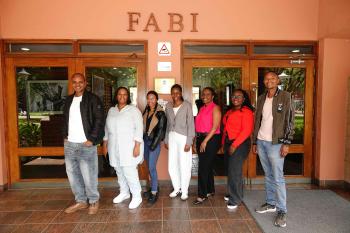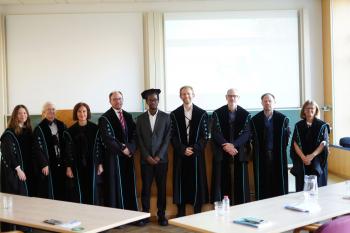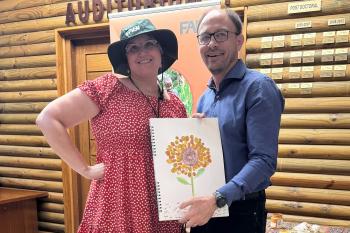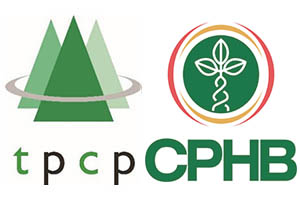Pest/Pathogen of the Month: April
Scientific name: Bathycoelia distincta (old name: B. natalicola - distant)
Common names: Two-spotted stink bugs
Bathycoelia distincta is a Heteropteran that was discovered in 1984 in the Limpopo region (South Africa). This indigenous species belongs to the Pentatomidae family, well-known to comprise the highest number of economically important species in the world. These bugs are phytophagous and feed by inserting their stylets (mouthpart) into the food source to suck up nutrients, resulting in potential damage to plant tissue. Pentatomidae species are also characterized by their general ovoid form, antennae, and tarsi segmented into five and three parts respectively, and a short triangular scutellum. They are commonly called stink bugs, due to the odour produced by their scent glands. The Pentatomidae is the largest family within the superfamily Pentatomoidea (Heteroptera suborder, true bugs) and comprises of approximately 5000 of the estimated 8000 species, followed by the Lygaeidae, Reduviidae and Miridae. Species within Pentatomidae are further divided into eight subfamilies namely: Asopinae, Cyrtocorinae, Discocephalinae, Edessinae, Phyllocephalinae, Podopinae, Serbaninae and Pentatominae (the largest), in which B. distincta belongs.
Present in the three main macadamia production regions (Limpopo, Mpumalanga and KwaZulu-Natal), B. distincta represents the most important pest on macadamia orchards in South Africa. Currently the utilisation of insecticide is the only solution against this pest, despite the development of resistance and the negative impact on the environment. For these reasons, FABI students Elisa Pal and Byron Sonnekus from the Macadamia Protection Program team lead by<p>Dr. Gerda Fourie are working on the development of alternative management options for B. distincta.















































